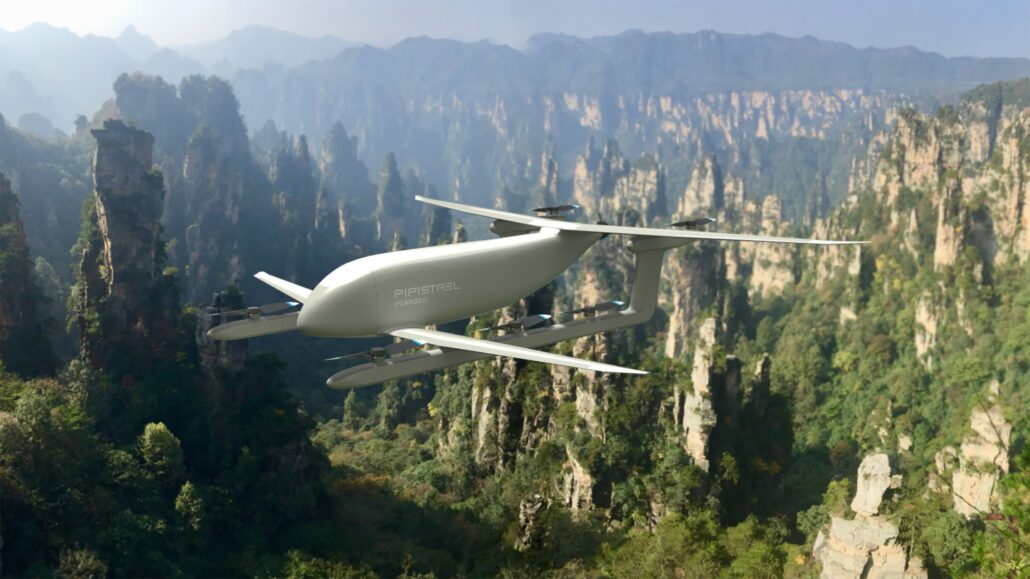Future Flight: Pipistrel Nuuva V300
Cargo first, passengers later

At the time, the company said it was shifting its energies to the development of an autonomous cargo drone. Now the curtain has been pulled back on that design.
It’s called the Nuuva V300, and it’s fitted with two wings and powered by a hybrid propulsion system. Eight Pipistrel E-811 electric motors and a conventional, FADEC internal combustion engine power the Nuuva, which is capable of vertical takeoffs and landings. The mix of electric and piston power means much improved range and load-carrying capability compared to the current crop of nascent all-electric eVTOLs. That’s because the piston engine drives a generator, which in turn constantly charges the batteries feeding the electric motor/rotor units. The internal combustion engine can use avgas or premium auto fuel; fuel capacity is 108 gallons.
The Nuuva’s dimensions are similar to those of conventional general aviation airplanes: 33 feet long, with a wingspan of 43 feet, four inches; a 10-foot height; and a max takeoff weight of 3,750 pounds. Its most compelling features are those twin wings, its large fuselage/cargo pod, and eight fixed rotors mounted on a twin-skid assembly. They provide vertical lift, and a single pusher propeller provides thrust for cruise flight. The Nuuva is optimized to fly a “typical” load weighing 660 pounds as far as 162 nautical miles (with 30-minute reserves). With loads as light as 100 pounds, however, range can extend to 1,500 nm. With a maximum payload of 1,014 pounds, range is set at 50 to 60 nm. The cargo pod’s nose hinges upward, allowing unobstructed loading of standard-size pallets.
In a time when the eVTOL air taxi concept has been the shiny new object, the Nuuva shows a different, more reasoned path to the future. Prove the eVTOL concept in cargo drone form first, put it into use, rack up time in service, compile data, and then apply this knowledge to people-moving eVTOLs. In this case, that includes the operational realities of autonomous flight—because the Nuuva will be pilotless. Pipistrel says entry into service is expected in 2023.
pipistrel-aircraft.com/aircraft/nuuva-v300
Email [email protected]



